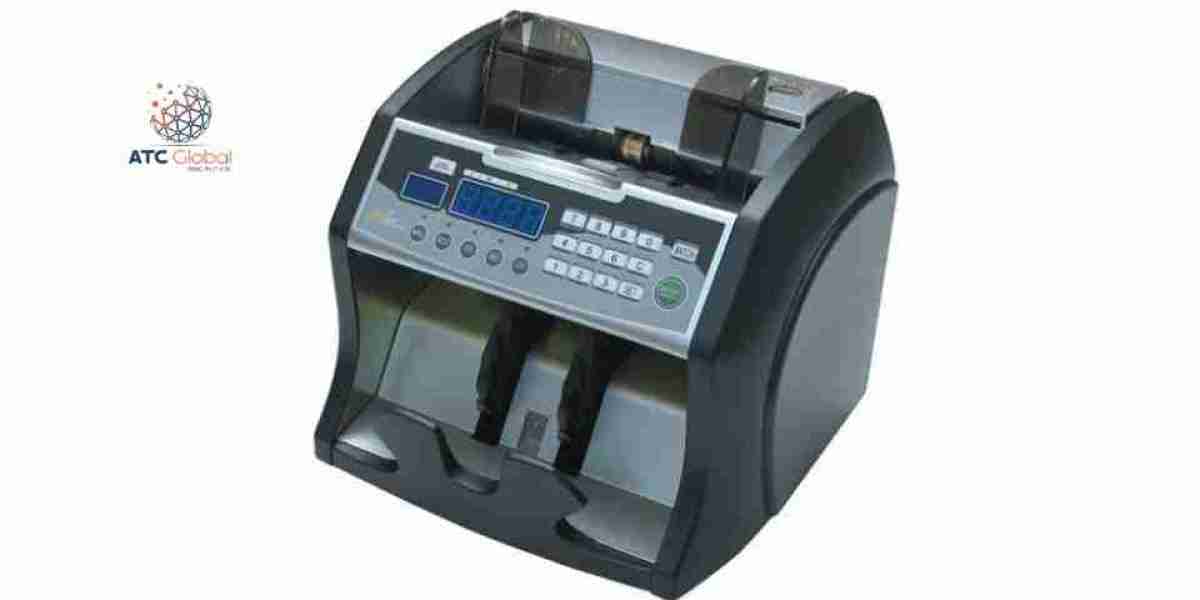A currency counting machine, also known as a banknote counter or cash counter, is a technological marvel designed to streamline cash handling. These electronic devices are specifically built to efficiently and accurately count large quantities of banknotes, saving businesses significant time and minimizing the risk of human error.
How Does a Currency Counting Machine Work?
The inner workings of a currency counting machine involve a combination of mechanical and electronic components. Here’s a breakdown of the typical process:
- Feeding the Machine: Bills are inserted into a designated feeder tray, either fanned out or stacked depending on the machine’s capabilities.
- Counting Mechanism: Using a series of rollers and sensors, the machine feeds each bill individually through a designated path. Light beams or image scanners detect the passage of each bill, incrementing the count.
- Denomination Recognition: Advanced machines utilize advanced sensors and image recognition technology to identify the denomination of each bill. This involves comparing the bill’s size, color patterns, and security features to pre-programmed data.
- Counterfeit Detection: Many currency counting machines incorporate sophisticated counterfeit detection features. These may include ultraviolet (UV) and magnetic (MG) detection systems that can identify inconsistencies in the paper or magnetic properties commonly found in counterfeit bills.
- Batching and Sorting: Some machines offer batching and sorting functionalities. Users can pre-set the machine to count and group bills into specific quantities for easier handling and storage.
- Output Display: The machine displays the total count of each denomination, as well as the overall total amount of cash processed.
Benefits of Using a Currency Counting Machine
There are numerous advantages to incorporating currency counting machines into your business operations. Here are some key benefits:
- Increased Efficiency: Counting large amounts of cash manually is a time-consuming and tedious task. Currency counting machines can significantly reduce processing time, freeing up staff for other important duties.
- Improved Accuracy: Human error is inevitable when counting cash manually. Currency counting machines eliminate this risk, ensuring precise and reliable counts every time.
- Enhanced Security: Counterfeit detection features provide an additional layer of security, helping to deter fraud and protect your business from financial losses.
- Streamlined Operations: Batching capabilities can significantly improve cash handling processes for businesses that deal with large volumes of cash on a regular basis.
- Reduced Risk of Errors: By automating the counting process, currency counting machines minimize the risk of human error in calculations and discrepancies in cash handling.
- Improved Record Keeping: Some machines offer the ability to generate reports and track cash flow data, facilitating accurate record keeping and financial management.
Applications of Currency Counting Machines
Currency counting machines are widely used in various industries that handle significant amounts of cash on a daily basis. Here are some common applications:
- Banks and Financial Institutions: Banks rely heavily on currency counting machines to process deposits, withdrawals, and prepare cash for ATM machines.
- Retail Stores: Retail businesses use currency counting machines to count daily sales receipts and prepare deposits for armored car services.
- Casinos and Amusement Arcades: These establishments utilize currency counting machines to manage large volumes of cash generated from slot machines and other games.
- Restaurants and Hospitality: Currency counting machines help restaurants and hotels efficiently count daily cash takings and prepare deposits.
- Grocery Stores and Convenience Stores: These businesses can use currency counting machines to streamline cash handling processes at checkout counters.
Choosing the Right Currency Counting Machine
With a variety of options available, selecting the right currency counting machine for your business needs is crucial. Here are some factors to consider:
- Volume of Cash Handled: Choose a machine that can efficiently handle the typical daily or weekly cash volume your business generates.
- Features Needed: Consider the functionalities you require, such as denomination recognition, counterfeit detection, batching capabilities, and reporting features.
- Budget: Currency counting machines range in price depending on their capabilities and brand. Determine a budget that aligns with your needs.
- Security Features: The level of security features required will depend on the type of business you operate and the potential risk of counterfeit bills.
- Ease of Use: Choose a machine with a user-friendly interface that your staff can learn to operate quickly and efficiently.
Conclusion
Currency counting machines are valuable tools that offer businesses significant advantages in terms of efficiency, accuracy, and security. By automating the cash handling process, these machines save time, minimize errors, and help businesses manage their cash flow effectively. Whether you operate a bank, a retail store, or a hospitality establishment, investing in a currency counting machine can be a wise decision to improve your financial operations.








